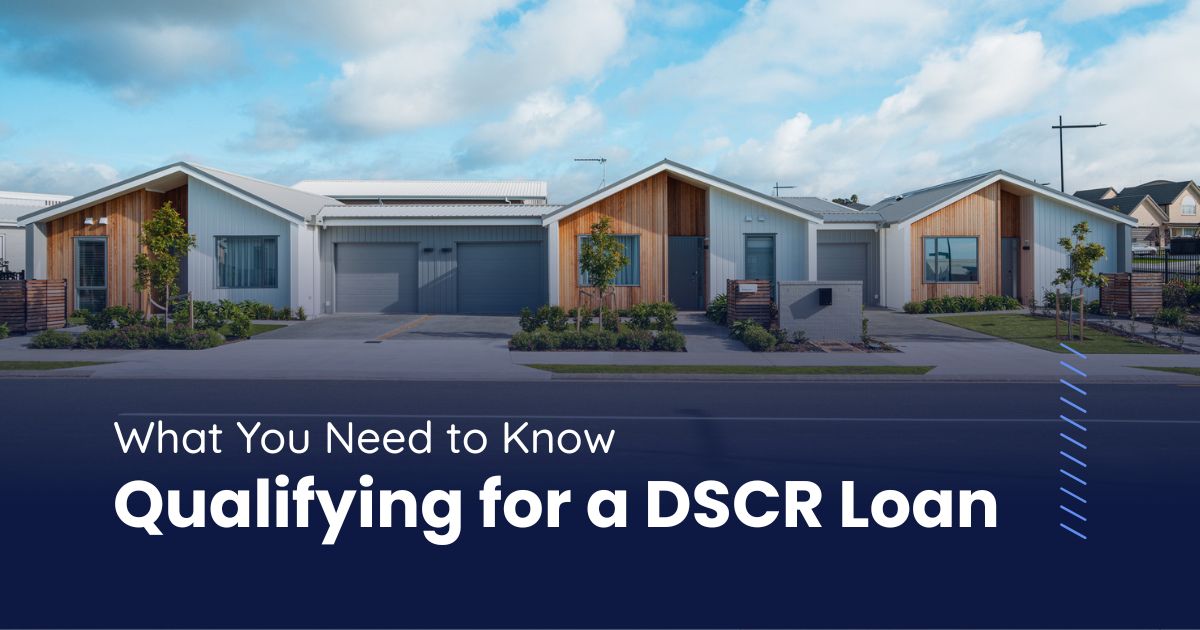Owning rental property is a great way to build long-term wealth, but how do you grow your portfolio if you have irregular income or you’ve exhausted traditional financing options?
Enter DSCR loans—your secret weapon to scaling your real estate holdings. Understanding how to qualify for a DSCR loan can set you up for long-term investing success.
At ABL, we offer fast DSCR rental loans to investors of all experience levels. Qualify with minimal paperwork and close in as few as 20 days.
What Is a DSCR Loan?
A DSCR loan is a real estate loan that qualifies borrowers based on the property’s cash flow, not the borrower’s personal income. Lenders use a property’s debt service coverage ratio (DSCR), which compares cash flow to debt payments, to determine eligibility.
How DSCR Loans Work
To understand how DSCR loans work, you must first understand how DSCR is calculated.
Calculating DSCR
DSCR is calculated by dividing a property’s net operating income (NOI) by its debt payments:
| DSCR = Net Operating Income (NOI) / Debt Payment |
For example, if a property cash flows for $2,000 per month and has a monthly debt payment of $1,500, the DSCR would be about 1.33 ($2,000 / $1,500).
Evaluating DSCR
What’s a good DSCR? While there isn’t a single right answer, the higher your DSCR, the better:
- A DSCR lower than 1 indicates that the property’s cash flow isn’t enough to cover its debt obligations. As a result, this likely won’t qualify for a DSCR loan.
- A DSCR of 1 means the property has just enough cash flow to cover its debt obligations. However, without a margin, this is still unlikely to qualify for a DSCR loan.
- A DSCR higher than 1 means the property’s cash flow is more than enough to cover its debt obligations. This is the only range at which DSCR loans are typically available.
For example, ABL has an average DSCR requirement of at least 1.2 (although lower DSCR programs are available).
DSCR Loan Requirements
While DSCR is the main underwriting factor for DSCR loans, it’s not the only factor. Here are other typical DSCR loan requirements:
- Credit score. Most DSCR lenders require a minimum credit score. At ABL, it’s 660.
- Loan size. Your DSCR loan may be limited to a minimum and maximum loan size. ABL offers DSCR loans of anywhere from $75K to $5M, including blanket loans.
- Loan term. Available DSCR loan terms vary, though they’re typically long-term. For example, ABL offers 30-year loan terms (fully amortized or interest-only).
- Property type. You may be limited to certain property types. At ABL, we offer DSCR loans for single-family, multifamily, and condo properties.
- Loan-to-value (LTV). LTV describes what percentage of a property’s value is covered by the DSCR loan. Most lenders have a maximum LTV. At ABL, it’s 80%.
- Interest rate. Interest rates vary by lender and market but play a major role in the final cost of the loan.
- Origination fees (points). These are fees charged at the outset for processing a DSCR loan. ABL offers DSCR loans for as few as 0 points.
How to Qualify for a DSCR Loan
Now that you know what DSCR lenders look for, here’s how to qualify for a DSCR loan:
Demonstrate Strong Cash Flow
Demonstrate that the property you intend to finance has strong cash flow, i.e., a high DSCR. This shows lenders that the subject property can handle the debt payments and still have some rental income leftover for emergencies and other unexpected expenses.
Prepare Necessary Loan Documents
Every DSCR lender requires certain loan documents. Collecting and organizing these upfront can help avoid delays and lead to a faster closing. For example, ABL asks for financial records related to your company’s income, credit, and cash availability.
Work with an Experienced DSCR Lender
For the best chance of qualifying for a DSCR loan, work with an experienced lender. ABL has been in the real estate lending business for over 15 years. During that time, we’ve funded over $3.3B in loans and earned 500+ 5-star reviews.
4 Tips to Increase Your DSCR
If a low DSCR is keeping you from qualifying for a loan, here are some ways to increase it:
1. Raise the Rent
Anything you can do to increase the rent will automatically increase your DSCR (all else equal).
For example, bring the rent up to local market rents to ensure you’re not underpricing. If you’re already at market rent, consider strategic improvements that could justify further rent increases, such as updating the kitchen or bathrooms. You can also explore adding amenities like parking or laundry facilities to collect extra rental income.
2. Lower Operating Expenses
Anything that lowers operating expenses will automatically increase your DSCR (all else equal).
Start by auditing your operating expenses to find inefficiencies and unnecessary costs. From there, try negotiating better deals with vendors. You may also want to install cost-saving upgrades, like LED lighting, smart thermostats, and energy-efficient appliances.
3. Shop for Better Utility and Insurance Rates
Insurance costs can add up fast and hurt your DSCR. To ensure you’re getting the best deal, compare quotes from multiple providers and consider bundling policies to get discounts.
The same goes for utility costs. Look for providers with energy-saving programs that can help you reduce your monthly costs or install submeters to make tenants responsible for utility costs.
4. Prioritize Tenant Relationships to Reduce Vacancies
Vacancies lower your rental income and hurt your DSCR. To avoid them, regularly communicate with tenants and respond to their needs. Tenants who feel heard and taken care of are more likely to stay longer, lowering your turnover.
Partner with a Premier DSCR Lender
Whether you want to buy a turnkey rental or complete a BRRRR project, ABL can help. Our fast, flexible DSCR loan program is designed to help you grow your real estate portfolio quickly and responsibly. See if you pre-qualify today!
